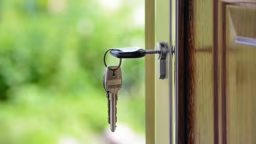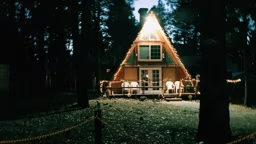Disclaimer: Those who know me might not consider me the best person to discuss renovation safety. In fact, those of you who have driven me to the ER, kept me stocked with ice and Advil, or otherwise have taken time out of your life to help me through some stupid mistakes, might be shaking your heads upon seeing my byline here.
But after researching this topic, I discovered I’d experienced two of the top safety concerns firsthand (and painfully so). I’m referring to ladders and power nailers. I might learn things the hard way, but learn them I do. And those lessons tend to stick with a guy. So, here are a couple real-life examples of two common DIY renovation safety mistakes.
LADDERS & SCAFFOLDING
It was an early Sunday morning, just six weeks before my wedding, and I was racing to my parents’ house in my old truck. We were re-roofing their house, and I was late.
After taking a few minutes of ribbing from the crew, I ascended the ladder to the scaffolding that ran along the eave. I was about to climb onto the roof when one of the guys asked me to grab his hammer. I took a step back down to the scaffold, my head still cobwebby from climbing out of bed 15 minutes earlier.
A stack of roof flashing (thin, square metal plates) makes for awfully poor footing, and certainly does not belong on a scaffold. Neither, apparently, does a sleepy young man. The flashing flew out from under my heel like a stack of shiny banana peels, and me and Mr. Gravity did a brief tango on my way down to a meeting
with the concrete stairway, 10 feet below.
The damages:
Two friends and I were racing against a short and bitterly cold December day, trying to frame up one more garage wall before dark. I grabbed the bottom plate of the west wall section and pressed the trigger on my power nailer, but my angle was bad. The edge of the frozen, pressure-treated wood shattered, and the nail meant to secure two boards speared me in the exact center of my left ring finger. Ouch.
It was stuck hard; I had no hope of removing it myself. For whatever reason, I convinced my friend to take me to the hospital without telling my pregnant wife about the accident.
Everything was fine until my friend’s car blew a head gasket as we raced to the ER. After waving down a car to borrow their cell phone – we had forgotten ours in our haste to leave the scene of the accident – I called my wife, and she came to the rescue.
I’ve had more enjoyable car trips.
The damages:
But after researching this topic, I discovered I’d experienced two of the top safety concerns firsthand (and painfully so). I’m referring to ladders and power nailers. I might learn things the hard way, but learn them I do. And those lessons tend to stick with a guy. So, here are a couple real-life examples of two common DIY renovation safety mistakes.
LADDERS & SCAFFOLDING
It was an early Sunday morning, just six weeks before my wedding, and I was racing to my parents’ house in my old truck. We were re-roofing their house, and I was late.
After taking a few minutes of ribbing from the crew, I ascended the ladder to the scaffolding that ran along the eave. I was about to climb onto the roof when one of the guys asked me to grab his hammer. I took a step back down to the scaffold, my head still cobwebby from climbing out of bed 15 minutes earlier.
A stack of roof flashing (thin, square metal plates) makes for awfully poor footing, and certainly does not belong on a scaffold. Neither, apparently, does a sleepy young man. The flashing flew out from under my heel like a stack of shiny banana peels, and me and Mr. Gravity did a brief tango on my way down to a meeting
with the concrete stairway, 10 feet below.
The damages:
- Compound fracture of the elbow, which actually hurt somewhat less than my …
- Sprained back.
- Moderate loss of pride from being photographed with a uniquely bent arm in wedding and honeymoon pictures.
- Never place anything on a ladder or scaffold; good worksite housekeeping can prevent many accidents.
- Give yourself time to wake up before jumping into a project.
- When working above ground, always check your footing, preferably twice.
- Consider using fall restraints when working above a height of 6 feet.
- Tell roofers to get their own damn hammer.
Two friends and I were racing against a short and bitterly cold December day, trying to frame up one more garage wall before dark. I grabbed the bottom plate of the west wall section and pressed the trigger on my power nailer, but my angle was bad. The edge of the frozen, pressure-treated wood shattered, and the nail meant to secure two boards speared me in the exact center of my left ring finger. Ouch.
It was stuck hard; I had no hope of removing it myself. For whatever reason, I convinced my friend to take me to the hospital without telling my pregnant wife about the accident.
Everything was fine until my friend’s car blew a head gasket as we raced to the ER. After waving down a car to borrow their cell phone – we had forgotten ours in our haste to leave the scene of the accident – I called my wife, and she came to the rescue.
I’ve had more enjoyable car trips.
The damages:
- Minimal, as I was lucky that the 3-inch framing nail pushed my finger bone out of the way instead of shattering it.
- Near loss of my wedding band due to swelling, but I was able to convince the doctor to leave it on.
- After that long car ride, I wasn’t sure I’d get another favor anytime soon.
- Take your time when working with power nailers.
- Always make sure your hand is nowhere near the strike zone of the nail.
- Novocaine is a wonderful thing.
- Tell your spouse when you screw up; he or she is going to find out anyway.
ESSENTIAL PPE FOR CABIN SAFETY
Are you properly equipped to stay safe during your cabin renovation projects? Here’s your checklist of Personal Protective Equipment (PPE) so you can make sure:
Are you properly equipped to stay safe during your cabin renovation projects? Here’s your checklist of Personal Protective Equipment (PPE) so you can make sure:
- Anti-fog safety glasses
- Hard hat (any time falling objects could be a hazard)
- Ear plugs/ear muffs (use both for loud projects)
- Steel-toe boots
- Leather gloves
- Dust mask
THE MOST COMMON INJURIES
Do-it-yourselfers
These are the top 5 DIY injuries incurred during home or cabin projects:
- Falling off a ladder.
- Getting struck by lawn mower debris.
- Injuries from a power tool.
- Burns or breathing problems caused by household chemicals.
- Lacerations from a chain saw.
Construction professionals
The pros aren’t faring much better. Note:
- Falls from ladders, scaffolds and elevated structures are the leading cause of accidental death on construction sites.
- On average, an estimated 37,000 accidents with nail guns require medical attention each year.
SOURCES:
- DIY data from the Home Safety Council, as reported by ConsumerReports.org, June 6, 2011.
- Construction site data from the U.S. Occupational Safety and Health Administration (OSHA).
 Thinkstock.com
Thinkstock.com 
 Thinkstock.com
Thinkstock.com 









